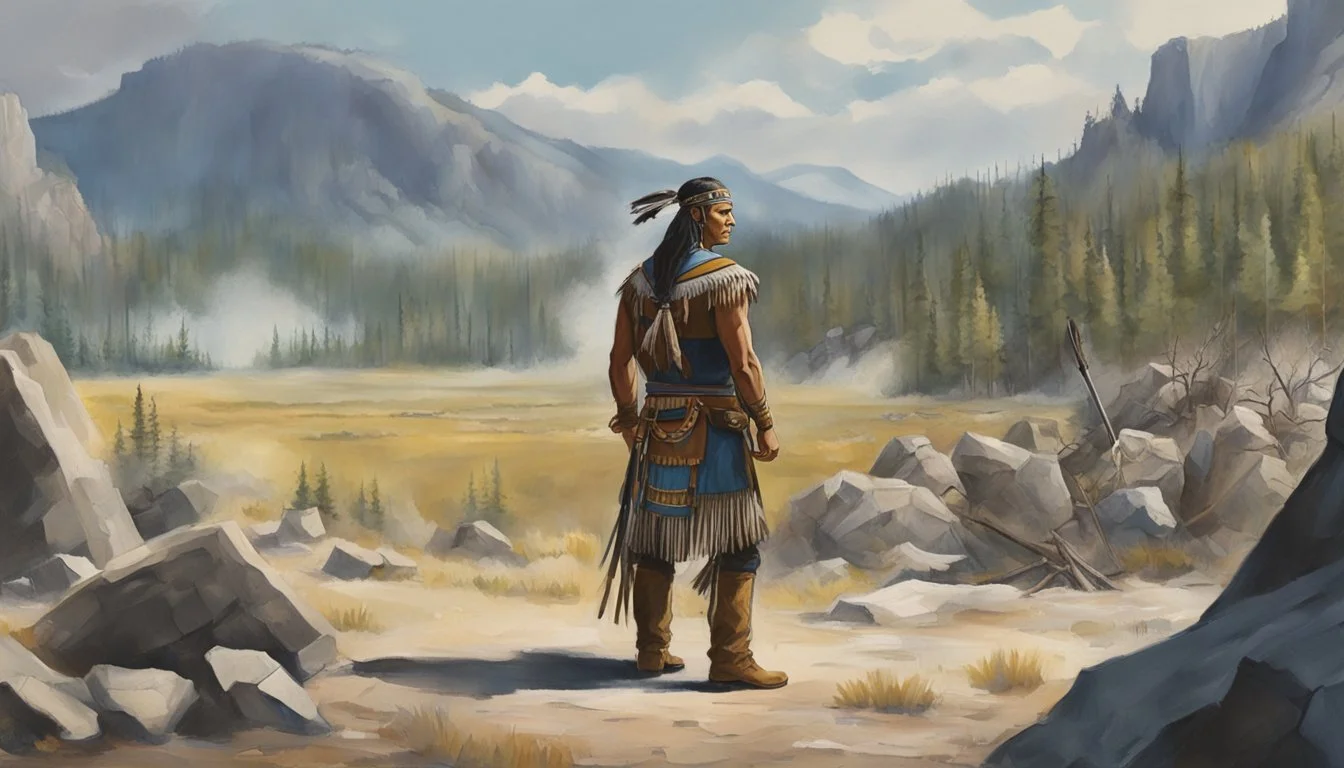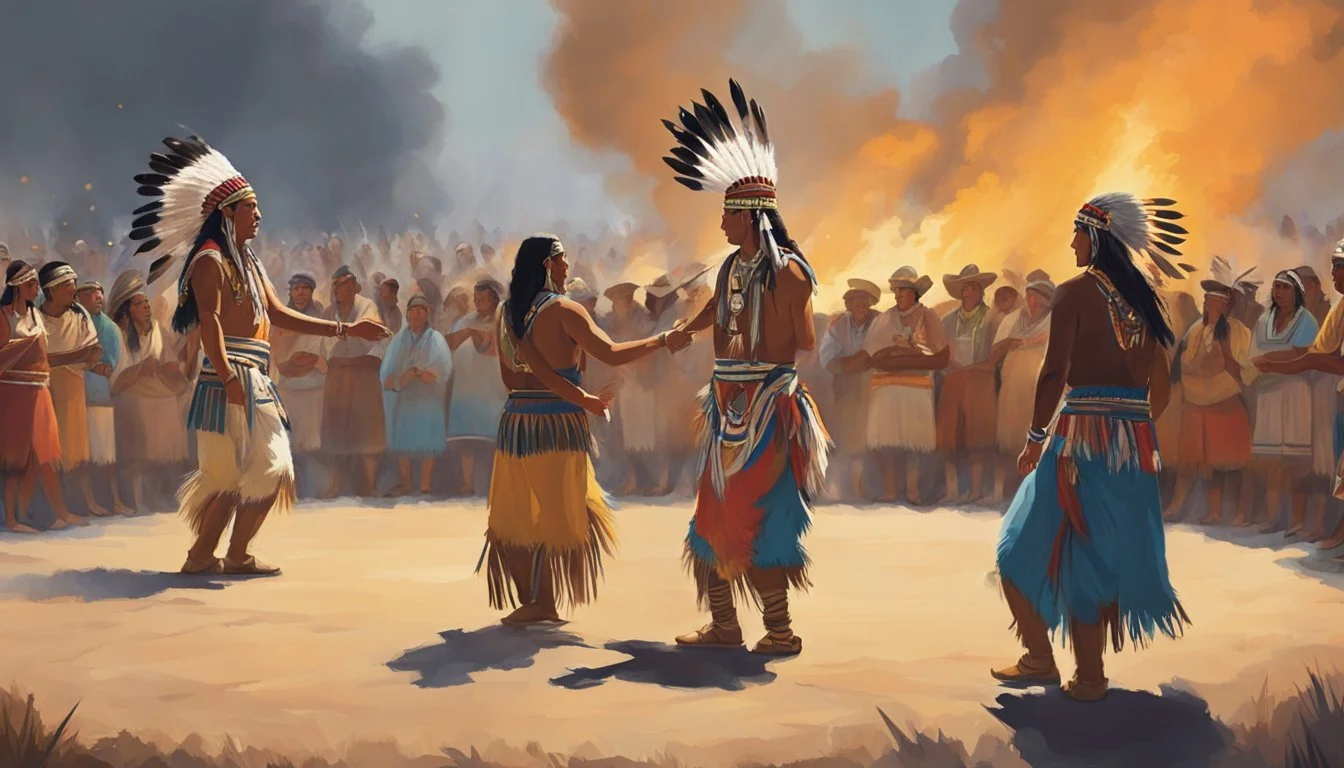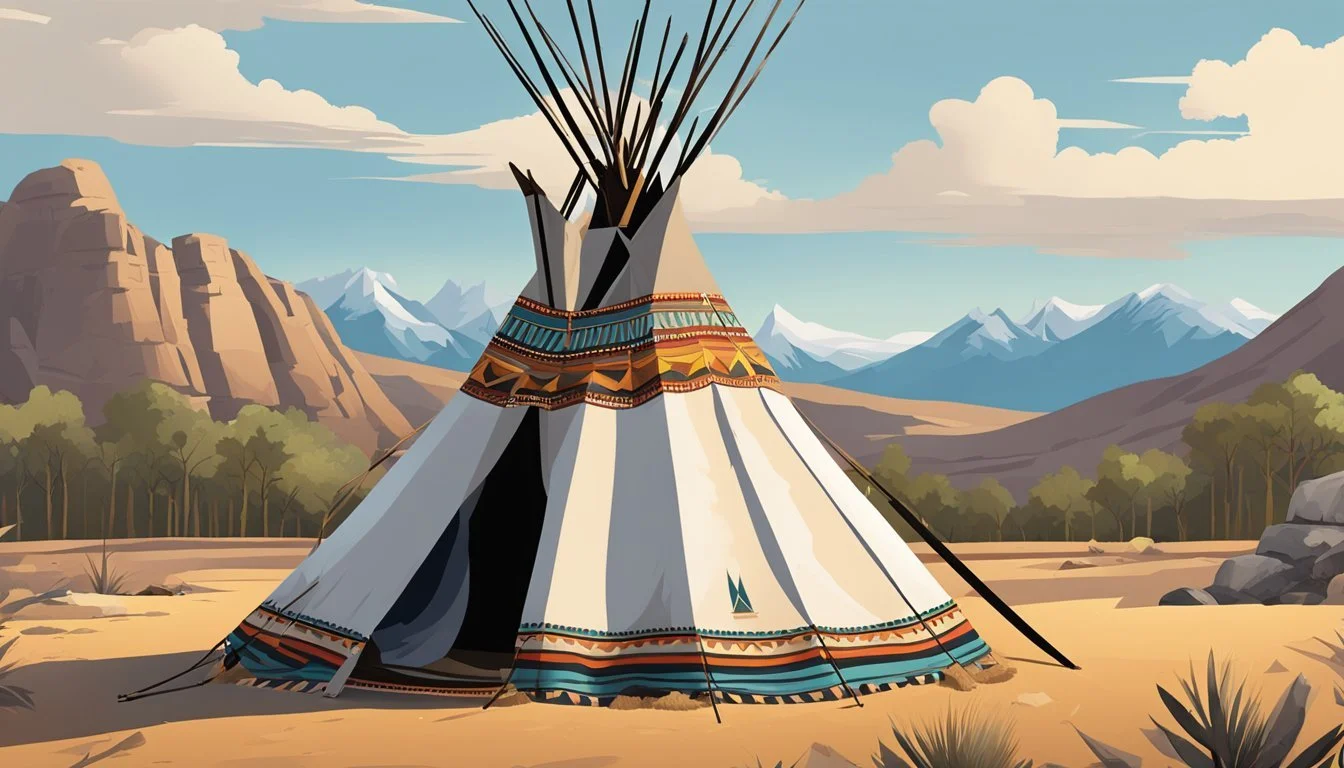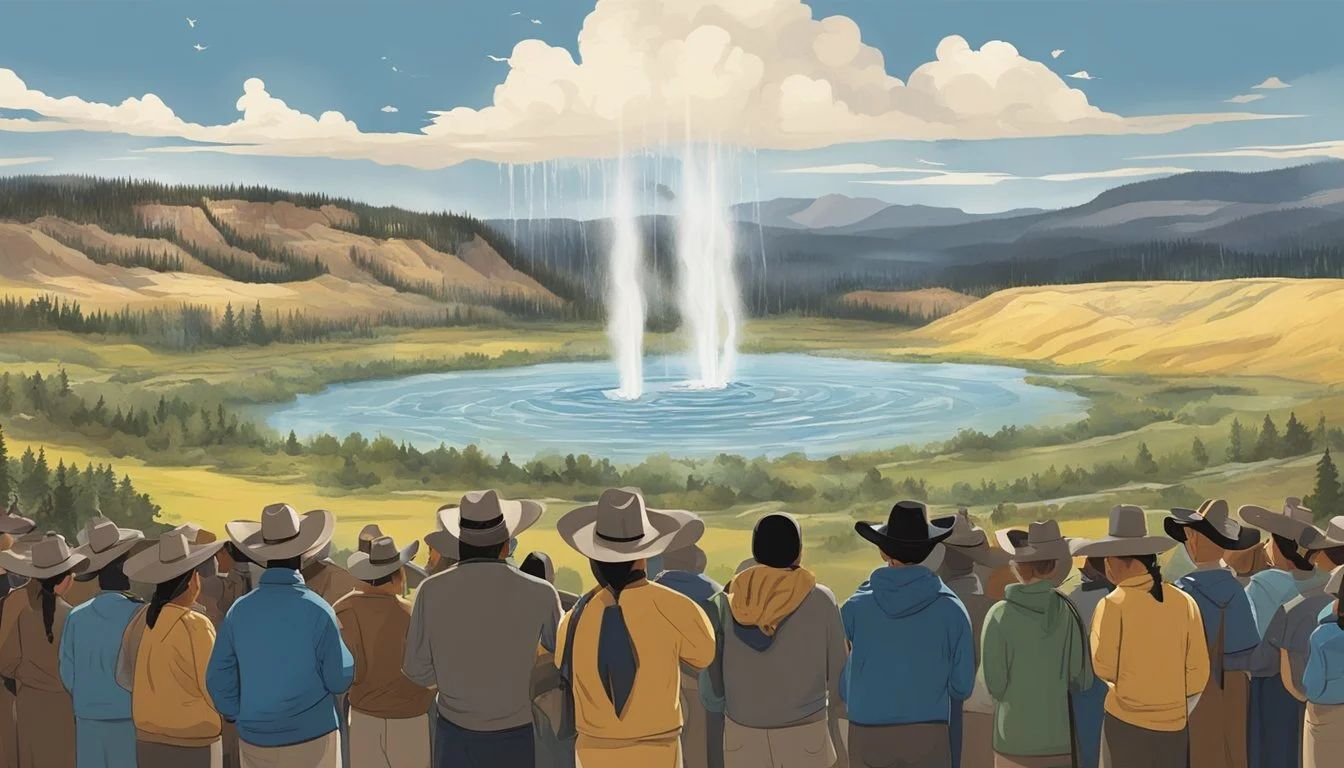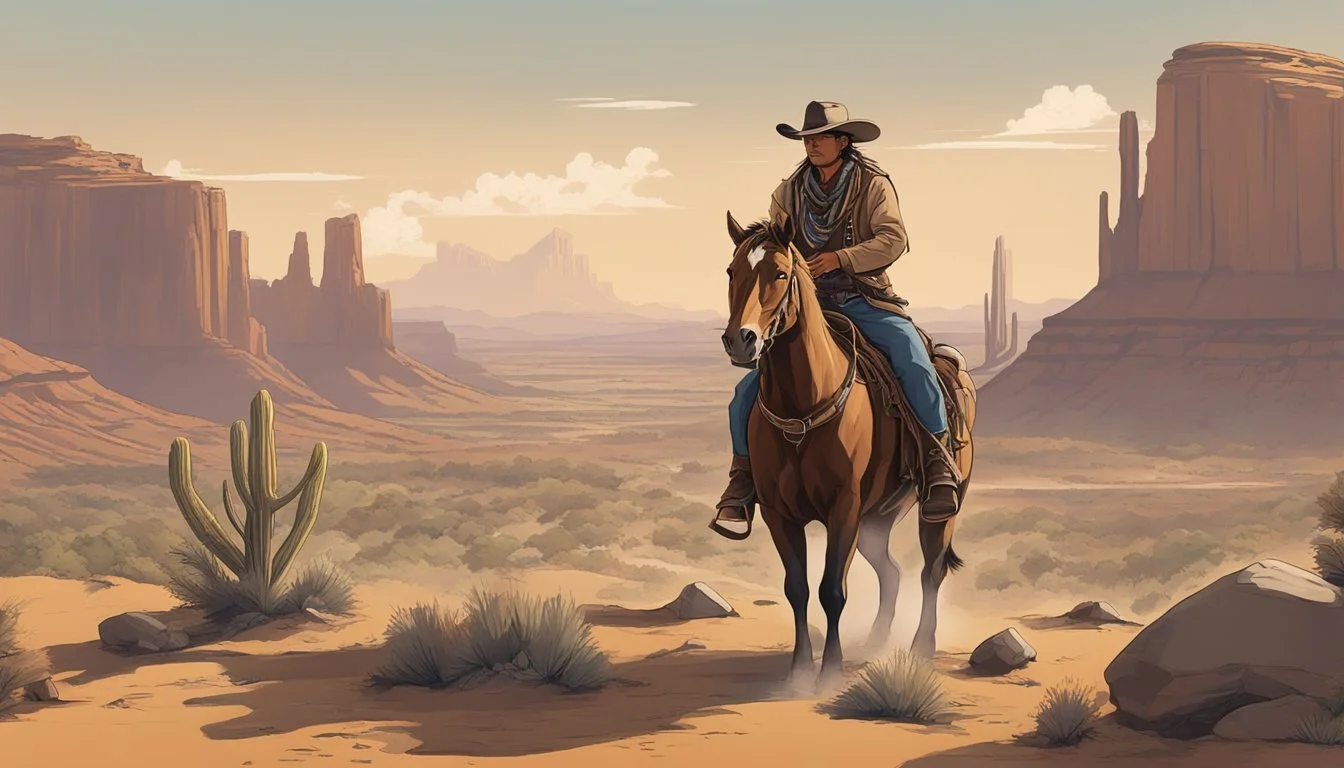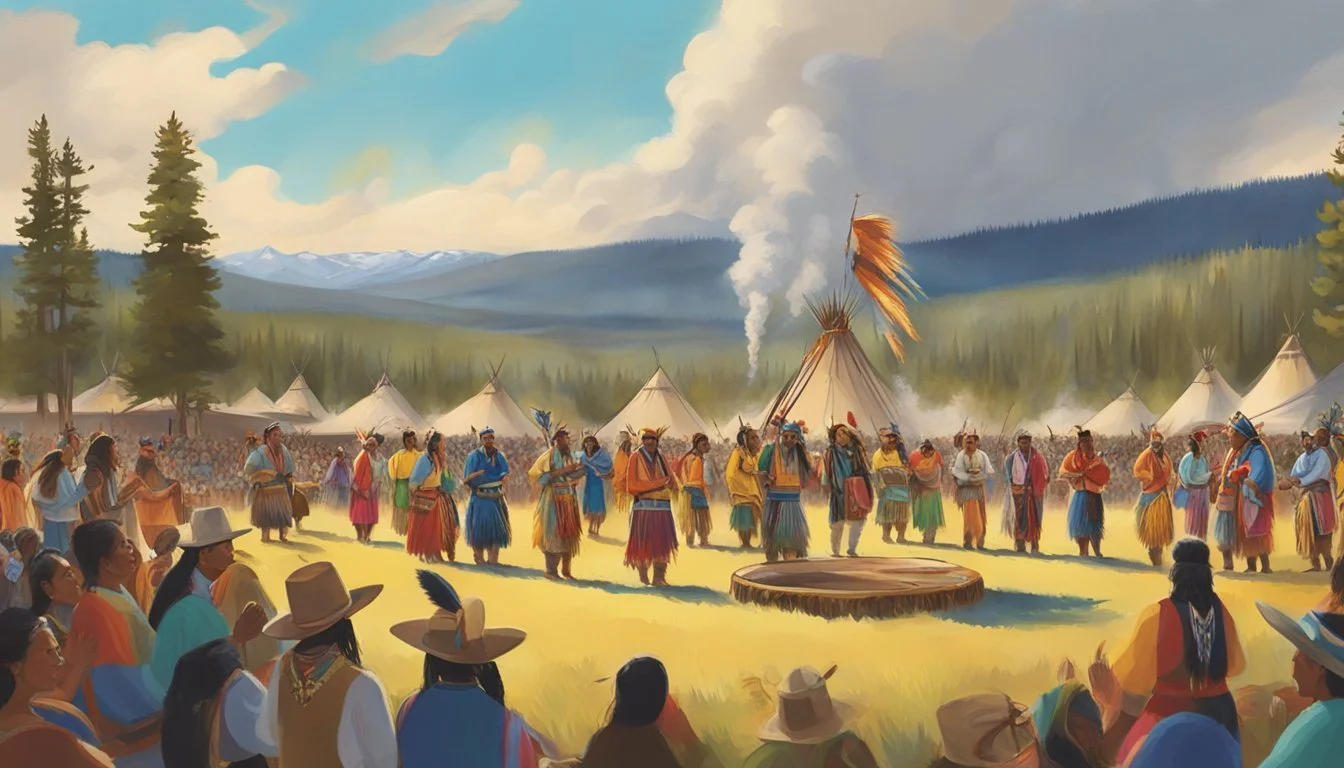9 Yellowstone Scenes That Showcase Native American Culture
Authentic Portrayals in Modern Western Drama
Yellowstone, the popular television drama series, has captivated audiences with its portrayal of life in the American West. Set against the backdrop of Montana's breathtaking landscapes, the show weaves complex narratives that touch on various aspects of contemporary rural life, including the experiences of Native American communities.
Yellowstone's depiction of Native American culture and issues has been a significant element of the series, drawing both praise and scrutiny from viewers and critics alike. Through carefully crafted scenes and storylines, the show has attempted to shed light on the challenges, traditions, and perspectives of indigenous peoples in modern America. These portrayals have contributed to broader discussions about representation and authenticity in mainstream media.
1) Monumental Confrontation at Broken Rock
The Broken Rock Reservation plays a significant role in Yellowstone's portrayal of Native American culture. A pivotal scene unfolds when Kayce Dutton faces off against the Broken Rock Reservation police.
This tense encounter occurs after Kayce becomes embroiled in a series of deaths on reservation land. The tribal police arrive to arrest him for his alleged involvement in these crimes, leading to a standoff.
The confrontation highlights the complex relationships between the Dutton family and the Native American community. It showcases the jurisdictional challenges and cultural tensions that exist between tribal lands and neighboring areas.
This scene provides insight into the legal and social dynamics on reservations. It demonstrates the authority of tribal police and the unique governance structures within Native American territories.
Through this confrontation, viewers gain a deeper understanding of the ongoing struggles and sovereignty issues faced by Native American communities in modern America. The scene effectively illustrates the delicate balance of power and justice in these cross-cultural interactions.
2) Powwow Ceremony in Season 3
Season 3 of Yellowstone features a memorable powwow ceremony that authentically portrays Native American culture. The scene takes place during a gathering of local tribes, showcasing traditional dance, music, and regalia.
The producers worked closely with Native American consultants to ensure the accuracy of the ceremony's details. Dancers in vibrant, intricately designed outfits move to the rhythmic beats of drums and chants.
The powwow serves as a backdrop for important character interactions and plot developments. It provides a rich, cultural setting that contrasts with the show's typical ranch landscapes.
Viewers get a glimpse into the spiritual significance of the powwow for the Native American characters. The ceremony highlights the importance of community, heritage, and connection to ancestral traditions.
This scene stands out for its respectful portrayal of Native American customs. It avoids stereotypes and presents the powwow as a living, dynamic part of contemporary Native culture.
3) Rainwater's Council Meeting
Chief Thomas Rainwater convenes a critical council meeting with tribal elders on the Broken Rock Reservation. The scene provides a glimpse into the inner workings of Native American governance and decision-making processes.
Rainwater addresses pressing issues facing the tribe, including land rights and economic development. The council chamber reflects traditional design elements, showcasing the blend of modern leadership with cultural heritage.
Elders share wisdom passed down through generations, demonstrating the importance of collective knowledge in tribal affairs. The meeting highlights the complexities of balancing preservation of traditions with progress for the community.
Tensions rise as differing opinions emerge on how to approach negotiations with outside entities. Rainwater's leadership skills are put to the test as he navigates these challenging discussions.
The scene underscores the ongoing struggle for Native American sovereignty and self-determination. It offers viewers insight into the thoughtful deliberation behind tribal decision-making and policy formation.
4) Teeter's Interview with Chief Thomas
Teeter's interview with Chief Thomas Rainwater provides a unique perspective on Native American culture in Yellowstone. The scene showcases the complexity of tribal politics and the challenges faced by indigenous communities.
Chief Rainwater, played by Gil Birmingham, brings gravitas to the conversation. His portrayal highlights the wisdom and diplomacy required of a tribal leader navigating modern conflicts.
Teeter, known for her colorful personality, approaches the interview with unexpected respect. This interaction demonstrates the show's ability to subvert character expectations and explore deeper cultural connections.
The dialogue touches on important issues affecting Native American reservations. Land rights, economic development, and preservation of traditions are discussed, offering viewers insight into contemporary tribal concerns.
Through this scene, Yellowstone provides a platform for Native American voices. It presents a nuanced view of indigenous perspectives, moving beyond stereotypes to explore the real challenges and aspirations of tribal communities.
5) Annual Native American Heritage Day
Yellowstone features a poignant episode centered around the Annual Native American Heritage Day celebration. This event showcases the rich cultural traditions of the local tribes near the Dutton ranch.
The scene depicts a vibrant gathering with traditional music, dance, and art displays. Tribal members don colorful regalia, performing intricate dances that have been passed down through generations.
Elders share stories and legends, preserving oral histories for younger generations. The episode highlights the importance of maintaining cultural identity in the face of modern challenges.
Viewers witness sacred ceremonies and rituals, offering a respectful glimpse into Native American spiritual practices. The show's creators worked closely with tribal consultants to ensure authentic representation.
This powerful scene serves as a reminder of the enduring presence and vitality of Native American cultures in the American West. It also underscores the complex relationship between the Dutton family and their indigenous neighbors.
6) Rainwater's Speech on Tribal Land
Thomas Rainwater, portrayed by Gil Birmingham, delivers a powerful speech about tribal land rights in Yellowstone. As chairman of the fictional Broken Rock Reservation, Rainwater articulates the historical and cultural significance of the land to his people.
The scene takes place during a confrontation with the Dutton family over disputed territory. Rainwater's words carry weight as he explains the deep connection between Native Americans and their ancestral lands.
His speech touches on themes of sovereignty, cultural preservation, and the ongoing struggle for Indigenous rights. Rainwater's eloquence and conviction shine through as he advocates for his community's interests.
The scene showcases the complexity of land ownership issues in the American West. It highlights the tension between different groups with competing claims to the same territory.
Through Rainwater's character, Yellowstone offers viewers insight into Native American perspectives on land rights. The speech serves as a poignant reminder of the ongoing impact of historical injustices on Indigenous communities.
7) Cowboying Amidst Tribal Politics
Yellowstone explores the complex interplay between ranching culture and Native American tribal politics. The series showcases how traditional cowboy lifestyles often intersect with the concerns of nearby reservations.
Several scenes depict characters navigating these dual worlds. John Dutton and his ranch hands frequently interact with tribal leaders, highlighting the tensions and occasional alliances that form.
The show presents the challenges faced by both ranchers and tribal members as they compete for land and resources. Characters like Monica Dutton and Thomas Rainwater embody the struggle to balance tribal interests with the realities of modern ranching.
Yellowstone's portrayal of these dynamics offers viewers a glimpse into the complexities of land rights and cultural preservation in the American West. The series doesn't shy away from depicting the political maneuvering that occurs between ranchers and tribal councils.
Through its storylines, Yellowstone illustrates how cowboy culture and Native American traditions continue to shape the landscape of Montana and surrounding areas. The show's creators consulted with tribal advisors to ensure a more authentic representation of these interactions.
8) Mystic Vision with Mo
Mo Brings Plenty, a cast member of Yellowstone and member of the Oglala Lakota Nation, played a crucial role in planning and executing a significant vision quest scene in the series. This scene provided viewers with an authentic glimpse into Native American spiritual practices.
The vision quest, a sacred ritual in many indigenous cultures, was depicted with careful attention to detail and cultural sensitivity. Mo's involvement ensured that the portrayal remained respectful and accurate to Native American traditions.
During the scene, character Kayce Dutton undergoes the intense spiritual experience. The ritual begins with the appearance of an owl, symbolizing Kayce's transition into the spirit world. This imagery holds deep significance in many Native American belief systems.
Mo's expertise helped create a powerful and meaningful representation of this important cultural practice. The scene resonated with viewers, particularly those with Native American heritage, who recognized the spiritual power conveyed on screen.
By incorporating such authentic elements, Yellowstone offers audiences a rare opportunity to witness and appreciate aspects of Native American spirituality rarely depicted in mainstream television.
9) Diné Song at the Rodeo
In a memorable Yellowstone scene, the Dutton family attends a local rodeo event. As the festivities unfold, a Diné (Navajo) singer takes center stage, captivating the audience with a traditional song.
The performer's powerful vocals echo through the arena, drawing attention to the rich cultural heritage of Native American communities. This moment serves as a reminder of the diverse traditions that coexist within the show's Montana setting.
Viewers witness the respectful silence that falls over the crowd as they listen to the haunting melody. The scene highlights the importance of preserving and honoring indigenous cultures in modern-day America.
Through this brief yet impactful performance, Yellowstone showcases the enduring presence of Native American art forms. The inclusion of the Diné song demonstrates the show's commitment to authentically representing various aspects of indigenous life.
This rodeo scene stands out as a poignant example of how Yellowstone integrates Native American culture into its storytelling. It offers a glimpse into the musical traditions that have been passed down through generations.
Understanding Native American Representation in Yellowstone
Yellowstone has made strides in portraying Native American characters and culture. The show's approach to casting and cultural consultation has played a crucial role in shaping its representation of Indigenous peoples.
Significance of Authentic Casting
Yellowstone features several Native American actors in prominent roles. Gil Birmingham, a Comanche actor, portrays Thomas Rainwater, the chairman of the Broken Rock Indian Reservation. Kelsey Asbille and Q'orianka Kilcher also bring depth to their Indigenous characters.
The inclusion of Native actors lends authenticity to the show's portrayal of reservation life and tribal politics. It allows for more nuanced performances and cultural insights that might be missed by non-Native actors.
This casting choice helps avoid stereotypical depictions and provides opportunities for Native American talent in the entertainment industry.
Cultural Consultants and Their Role
Yellowstone employs cultural consultants to ensure accuracy in its portrayal of Native American traditions and practices. These experts advise on various aspects, from language use to ceremonial details.
Consultants help writers and directors understand the complexities of modern Native American life. They provide guidance on tribal customs, governance structures, and historical contexts relevant to the show's storylines.
Their input is crucial in avoiding cultural misrepresentations and stereotypes. By working closely with the production team, consultants contribute to more respectful and authentic depictions of Native American characters and communities.
Cultural Themes Explored in Yellowstone
Yellowstone delves into complex Native American cultural themes with nuance and authenticity. The show examines tribal sovereignty and portrays traditional rituals with respect, offering viewers insight into Indigenous perspectives.
Depiction of Tribal Sovereignty
Yellowstone explores the concept of tribal sovereignty through the fictional Broken Rock Reservation. The series highlights the tribe's efforts to reclaim ancestral lands and maintain self-governance. Chief Thomas Rainwater, portrayed by Gil Birmingham, embodies a strong Native American leader navigating political complexities.
The show depicts tensions between the tribe and neighboring ranchers, illustrating real-world conflicts over land rights. Yellowstone presents the legal and cultural challenges faced by Native communities in asserting their sovereignty. This portrayal raises awareness about ongoing struggles for Indigenous autonomy in modern America.
Portrayal of Native Traditions and Rituals
Yellowstone showcases Native American cultural practices with careful attention to detail and authenticity. The series consults tribal advisors to ensure accurate representation of ceremonies and traditions. One notable example is the healing ritual performed for Monica Dutton in the episode "Sins of the Father."
The show avoids stereotypes and sensationalism when depicting these sacred practices. Instead, it offers viewers a respectful glimpse into Native spirituality and customs. Yellowstone's approach helps educate audiences about the rich cultural heritage of Indigenous peoples.
Traditional healing methods, spiritual beliefs, and communal gatherings are woven into the storyline. This integration allows for a more holistic representation of Native American life beyond political conflicts.


